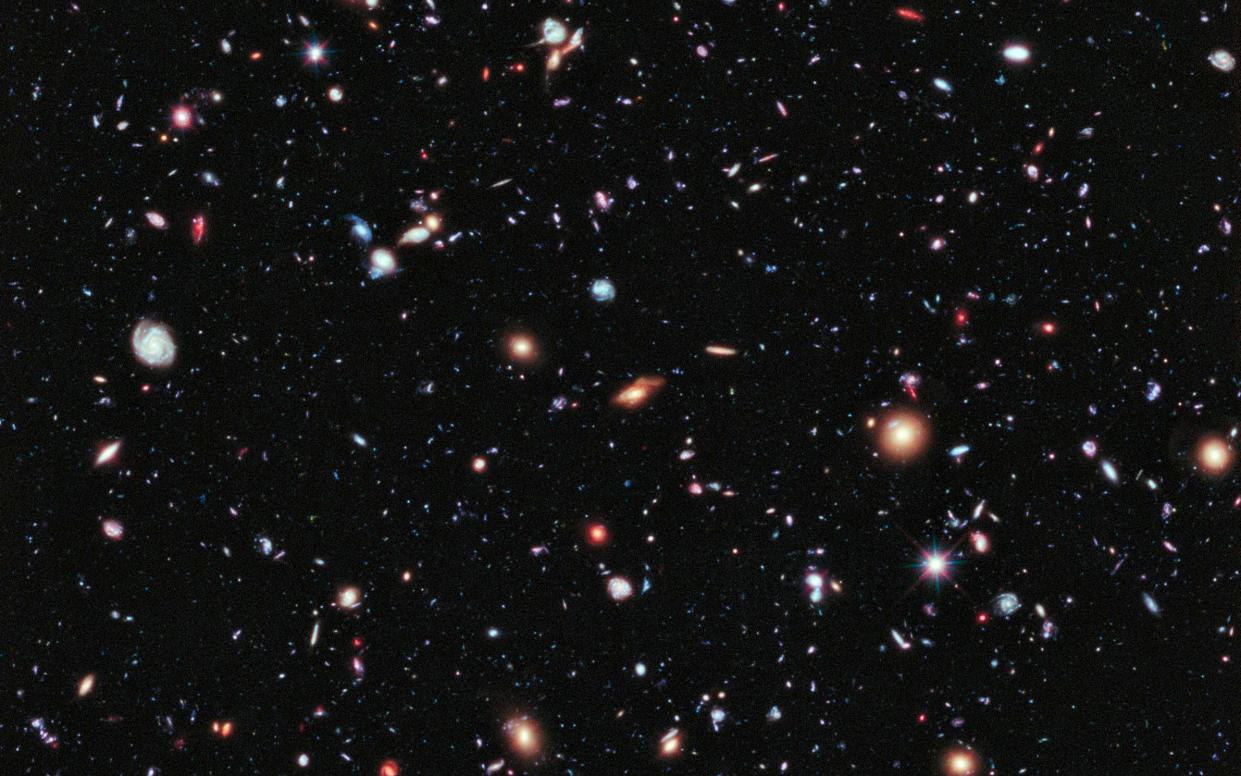First star in the Universe formed 300m years after the Big Bang

The first stars to ever exist did not form until around 300 million years after the Big Bang, a new study has found.
Academics from UCL and the University of Cambridge used high-powered telescopes to peer at six of the the most distant observable galaxies in the universe in the hope of determining the "cosmic dawn".
Data from the Hubble and Spitzer telescopes revealed the light emitted from these six galaxies was produced when the Universe was just 550m years old.
The Universe itself is known to be around 13.7 billion years old, proving these galaxies were around in the celestial infancy.
But the astronomers wanted to find out how old these galaxies were, and when they formed.
To do this, they looked at how much the light they produced had been stretched, a phenomenon known as 'redshift' which helps astronomers compare the distances of faraway objects.
In 2011, scientists announced they had seen the farthest object ever seen — a gamma-ray burst called GRB 090429B, which emanated from an exploding star. At the time, scientists estimated the explosion took place 13.14 billion years ago. By comparison, the Big Bang took place 13.8 billion years ago.
As a result of this the scientists calculated that the galaxies were between 200 and 300m years old.
“Our observations indicate that cosmic dawn occurred between 250 and 350m years after the beginning of the universe,” said lead author Dr Nicolas Laporte.
He adds that a more powerful telescope, such as the James Webb telescope which is due to launch at the end of this year, will be able to look back even further, to when these galaxies were created.
“Theorists speculate that the universe was a dark place for the first few hundred million years, before the first stars and galaxies formed,” he said.
“Witnessing the moment when the universe was first bathed in starlight is a major quest in astronomy.
Co-author Professor Richard Ellis, of UCL, said: “Over the last decade, astronomers have pushed back the frontiers of what we can observe to a time when the universe was only 4 per cent of its present age.
“However, due to the limited transparency of Earth’s atmosphere and the capabilities of the Hubble and Spitzer Space Telescopes, we have reached our limit.
“We now eagerly await the launch of the James Webb Space Telescope, which we believe has the capability to directly witness cosmic dawn.
“The quest to see this important moment in the universe’s history has been a holy grail in astronomy for decades. Since we are made of material processed in stars, this is in some sense the search for our own origins.”
The findings have been published in The Monthly Notices of the Royal Astronomical Society.

